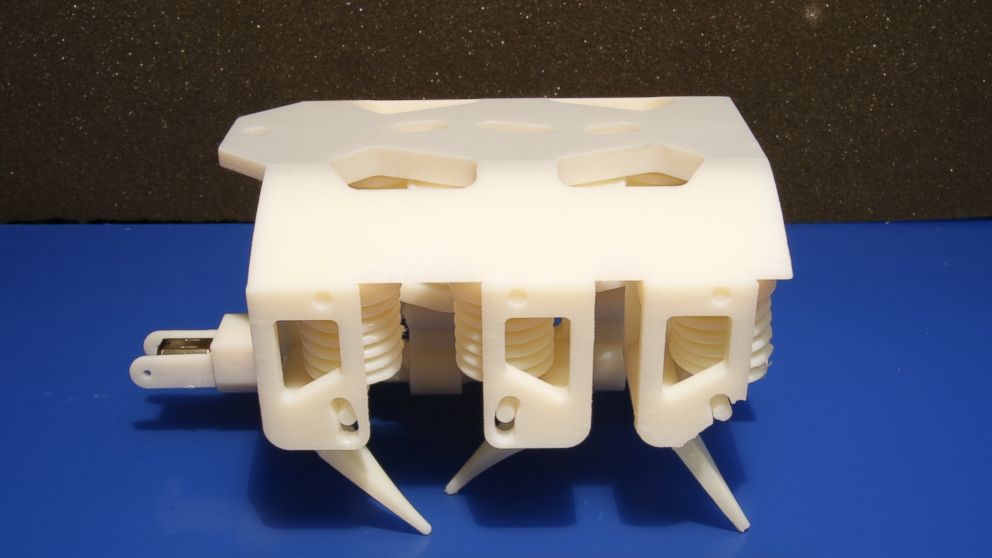Robot Walks Out of 3-D Printer After Being Completed
Researchers at MIT created six-legged robot that crawls out of 3-D printer.

— -- It's alive!
Researchers at the Massachusetts Institute of Technology's Computer Science and Artificial Intelligence Lab have created a 3-D printing process that in a single run can create a six-legged solid and liquid robot that can literally crawl out of the printer.
With the exception of its battery and motor, everything within the robot is made in a single printing run, including all of the hydraulic liquid-filled tubes that help the robot move.
“Our approach, which we call 'printable hydraulics,' is a step towards the rapid fabrication of functional machines,” Daniela Rus, director of MIT's Computer Science and Artificial Intelligence Lab, said in a statement. "All you have to do is stick in a battery and motor, and you have a robot that can practically walk right out of the printer."
Rus and her team used a 3-D inkjet printer to build the layers of the hexapod robot, depositing droplets of material roughly half the width of a human hair. A high-intensity UV light would then solidify what needed to be solid while leaving the liquids as they were.
The entire process took 22 hours, which is relatively short given the robot's complexity. In the future, it's expected the unique printing process could help cut down on the time and cost needed to make robots.
"Accelerating the process depends less on the particulars of our technique, and more on the engineering and resolution of the printers themselves," Rus said. "Printing ultimately takes as long as the printer takes, so as printers improve, so will the manufacturing capabilities."




